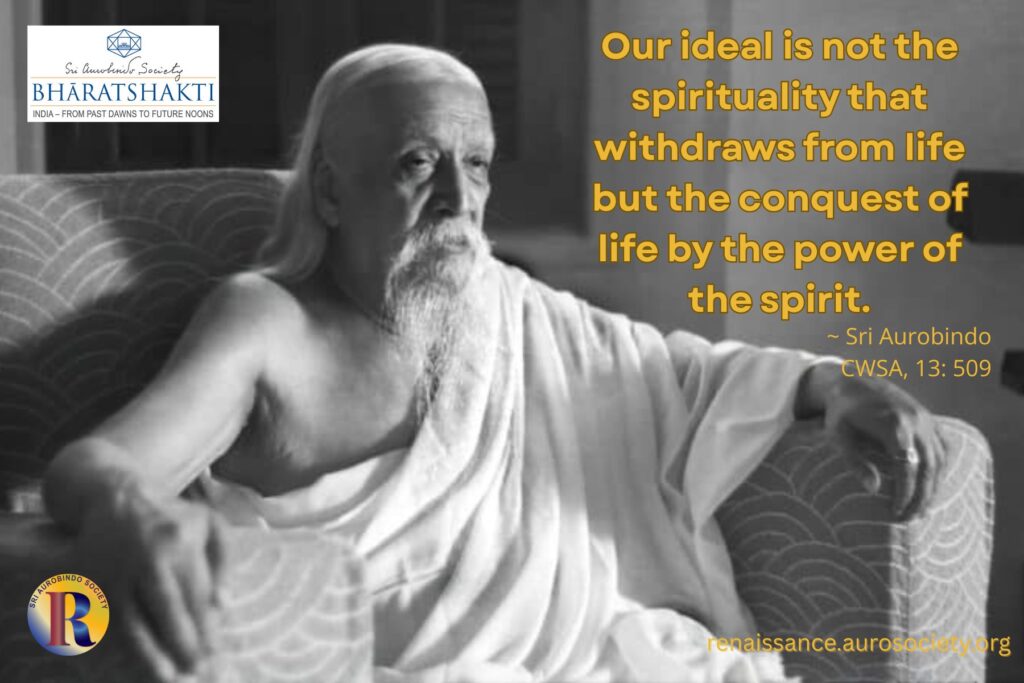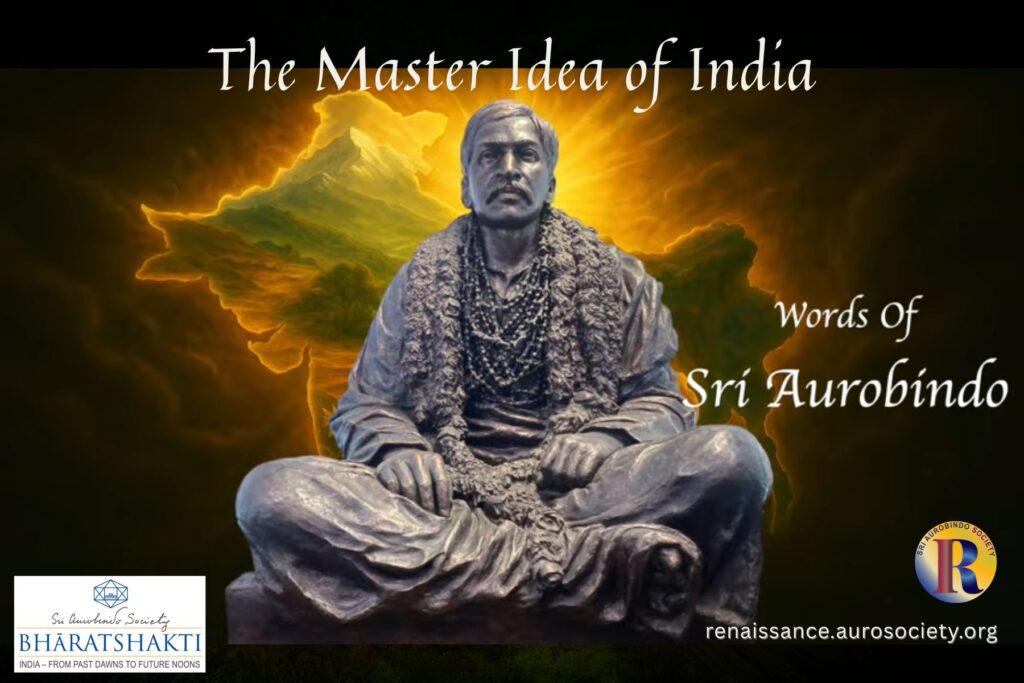Volume II, Issue 1
Author: Dr. Rajeshwari
Editor’s Note: In a speech written for the Maharaja of Baroda in 1901, Sri Aurobindo had referred to the history of indigenous system of medicine in India prior to the British colonial rule.
There was in this country an ancient and indigenous system of medicine, which had shared the fate of the other Hindu arts and sciences both in the comparatively high degree of scientific knowledge and intelligent practice it had reached in astonishingly early times and in the premature blight which had subsequently come over it.
In surgery, in pharmacy and in sanitation its knowledge was sound and masterly; it conducted successfully surgical operations which would have been far beyond contemporary science in Europe; it had amassed a pharmacopoeia from indigenous drugs, which, however imperfect, was possessed of considerable merit and efficacy; and its rules of sanitation were exhaustive, sound and in consonance with the scientific opinion of today. Its theory of the human body was, it is true, rather in agreement with ancient opinion than the more enlightened modern ideas, but its practical science was superior to its theory.
Upon this promising science as upon almost everything else in India there fell a curse of stationariness and decay. Its practice became mechanical; its science fell into desuetude; the old authorities couched in the learned tongue came to be repeated by rote; its pharmacopoeia was administered without intelligence or original research and analysis and therefore with only a fitful efficacy; surgical knowledge ceased to exist except in a rudimentary form, and sanitary rules once invested with a religious sanction came to be flagrantly violated in the daily practice of the people.
Mahomedan medicine, a mediaeval science based on the Greek, did not tend to correct this state of things; it only added another imperfect system to the existing one. To a country thus circumstanced Western civilisation came with a medical science which, recovered from its old stagnation, was making immense strides, with a vastly superior pharmacy, an ever bolder & more subtle surgery and organised & living grasp of sanitation.
CWSA, Vol. 1, pp. 687-688
We bring to you a series of articles written by Rajeshwari, a qualified specialist in Alternative Medicine who has conducted extensive research among rural and tribal communities of our country learning about diverse customs and rituals related to health and well-being. Learning from the wisdom of the elders in these communities, and based on her research into drugless therapies of India and the Far East, she has been practicing natural medicine for a long time.
In this series, she advocates living in harmony with Nature for a life of wellness and also strives to evoke and enhance the inherent divinity within each of us by sharing practical examples, interesting tales and anecdotes to help us along on this learning odyssey. This series was first published on cybernag.in under the author’s pen name Amritavarshini. We are grateful to the author for permitting us to re-publish it here, with some editorial modifications.
Introduction
Our ancestors had great knowledge about the factors that affect our lives and well-being. Using their common sense, they keenly observed every minute detail in their surroundings and natural forces, and learned, assimilated and used the knowledge thus gained to give us an invaluable legacy of health imbued with spirituality. By ‘ancestors’ I mean those of all indigenous cultures and civilisations but with specific focus on Indian and Eastern cultures.
They had an astonishing knowledge not only about health and diseases but also knew the importance of the right food in preventing and managing disorders of the body. They harnessed the Five Elements or of pañcamahābhūta – Ākāśa (sky/space/ether), Vāyu (air), Agni/ (fire), Appa/Jala (water), and Prithvī (Earth) which are present both in Nature as well as the human body – to correct imbalances and restore good health. To achieve this, they set in place customs, rituals and traditions that would bestow on us the best of physical and spiritual health. If one were to closely study the customs and rituals followed by people of different cultures over centuries, one would be amazed to see the wisdom of our ancestors.
Though both men and women of the ancient world possessed a good knowledge of health and diseases, it was the women who took care of the family’s welfare, including health and meals. They knew precisely how to keep all the members fit and healthy. A grandmother could be equated to a senior family doctor, and the younger women to interns. All knowledge was transmitted down the generations through observation and practice, and of course, by listening to elders, without the benefit of any notes.
When we look at Indian and other Eastern cultures, we are amazed at our ancestors’ knowledge of astronomy, astrology and other cosmic sciences, though they did not call them by these names! They knew about climate variations and could predict natural calamities just by observing the changes in the behaviour of animals and birds – more accurately than our meteorologists with all their sophisticated equipment can do today. They could deduce the effects of the movement of the planets and other celestial bodies on the behaviour and health of the inhabitants of the Earth. Finally, they connected with the Divine within themselves by being connected and compassionate to all living beings, including plants.
To this day, remote communities and tribes that are untouched by modern trappings rely on their elders’ knowledge of Nature’s ways. Unfortunately, generations of nuclear families and the increasing popularity of conventional medicine in both urban and rural areas have reduced the influence of elders in our society and consequently the importance of folk medicine and wisdom. It is a pity that a treasure trove of such wisdom is being lost due to scepticism, which are getting rejected as superstition and old wives’ tales.
The pañca mahābhūta have always been the guiding and governing forces of our well-being, despite sea changes in medical practices over the millennia. Thankfully, we have a clearer vision with proof, backed by scientific experiments and investigations under lab conditions, that the Five Elements are indeed the vital forces in our lives.
Panća Mahābhūta and their Role in Wellness

Panća Mahābhūta or the Five Elements are not only found in Nature but also within the human body. In that respect, our body can be compared to a small universe. It was therefore natural for our ancestors of Indian and Eastern cultures to make the five elements an integral and inseparable part of all customs and traditions. These customs might have evolved and changed over the centuries and millennia, but the basic concepts ingrained in them have remained unchanged even today.
Nature was the nurturer for our ancestors, as she provided them with food, energy, herbs to cure ailments, relief from stress and tension-related mental illnesses, and much more. They lived in harmony with Nature and the Five Elements contained therein. With the passing of time, people began settling down, forming clusters of civilisation and these very bhūta-s not only became their means of livelihood and means of transport, but also proved to be an inexhaustible source of knowledge.
They further enhanced their knowledge through a spirit of inquiry that led to exploration, thereby creating a treasure trove of wisdom for posterity. So vast in scope and depth is this storehouse of knowledge that it wouldn’t be wrong to say that we are still only skimming the surface.
Realising that human existence depended on the bhūta-s, our ancestors began caring for them. It was almost as if the latter actually spoke to our ancestors: “Use us, but also nurture us and we will be your well-wishers and care-givers in return!” What a beautiful way of living in interdependence!
Living closely with the Elements, they understood their moods and behaviour – when the weather would be pleasant, when it would turn foul, the change of the seasons, when the rains would be good and when they would fail and so on. Thus, they devised a comfortable and compatible co-existence of humans, other living beings and Nature. There are verses in our Vedas and Upanishads that offer prayers to the Panća Mahābhūta of Ākāśa, Vāyu, Agni, Jala, and Prithvī.

Our ancestors nurtured and preserved the Five Elements by living in tune with Nature, instituting certain rituals and customs that were beneficial for both living beings and Nature. The underlying concept was mutual reverence and nurturing, because each of them involved the use of one or more bhūta-s, which in turn benefited the humans.
Even a cursory study would reveal the great wisdom and deep thought behind these customs. By cleverly weaving the rituals and customs around divine propitiation in the early years and later around dharmic duties and social obligations, our ancestors ensured that the living beings and Nature were cared for equally.
Interestingly, many of these rituals and customs exist even today. While many people follow it by force of habit or compulsion without understanding the significance behind them, others reject them completely as being superstition or regressive. Let us consider some of the customs related to temple pujā and the bhūta-s involved in them.
The foremost one is water. No temple visit is complete without jala. Many of our temples were/are either situated on riverbanks or have temple tanks attached to them – the latter being a part of any medium or large temple – especially in southern India. The devotees first take a holy dip in rivers and temple tanks before entering the temple.
In all temples the Deity has abhişekam (ritual bathing) performed by the purōhita. In northern India, the devotees themselves offer jala to Shiva in temples. They drink the abhişeka tīrtham, or the purōhita sprinkles the tīrtham on the devotees (tīrtha prokśanam). No wonder water bodies were preserved and kept pure with so much emphasis on the use of jala in temple rituals.
Interestingly, a pilgrimage is known as tīrtha yātra in India. The word tīrtha literally means crossing over, which is usually representative of the crossing over of this ocean of earthly existence to the realms beyond. So, the idea of water is present there also.
Large scale homa-s or havans and yajñá–s performed in temples bring in the element of agni to clear away any pollution of the vāyu in the atmosphere. Prithvī is conserved by growing plants and trees for producing flowers and leaves, fruits and twigs offered in the havans. The flowers and leaves have beneficial medicinal properties that help cure many diseases. When these four bhūta-s are protected and preserved, the fifth one – Ākāśa (sky) becomes pristine, pure and directly connects the spirit of man to the Divine Force.
It is popularly believed, especially in southern India that Lord Śiva manifests Himself in the form of the panćabhūtas in each of the following sthalas, of which four are in Tamil Nadu and one in Andhra Pradesh.
- As Prithvī Lingam at Kancheepuram
- As Vāyu Lingam at Kalahasthi
- As Appu/Neer/Jala Lingam at Thiruvanaikaval
- As Agni Lingam at Tiruvannamalai
- As Ākāśa Lingam at Chidambaram
To understand panćabhūta tattva and the importance of the bhūta-s in our lives we should know how these five elements affect our body. In the succeeding parts, I will discuss more about the concept of the pañcabhūta tattva, explaining how the different elements are intertwined with each other and how only their perfect balance can make for our physical and mental well-being.



